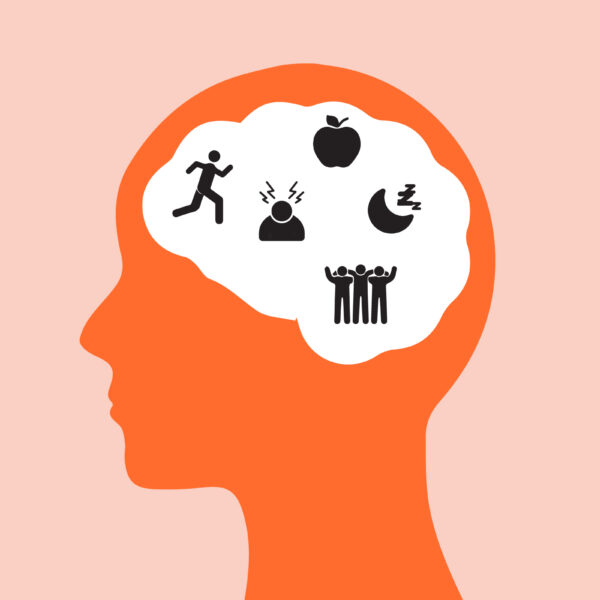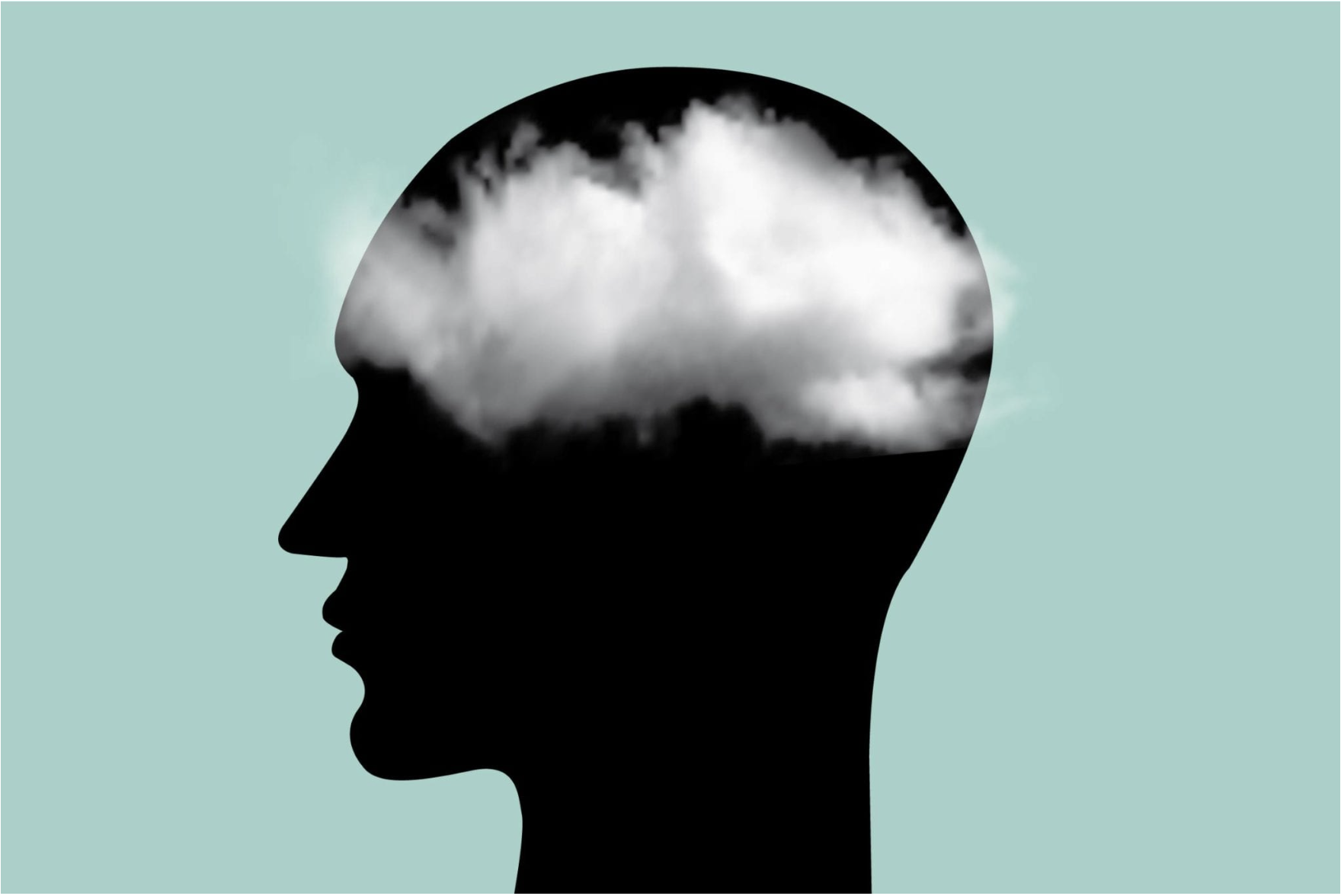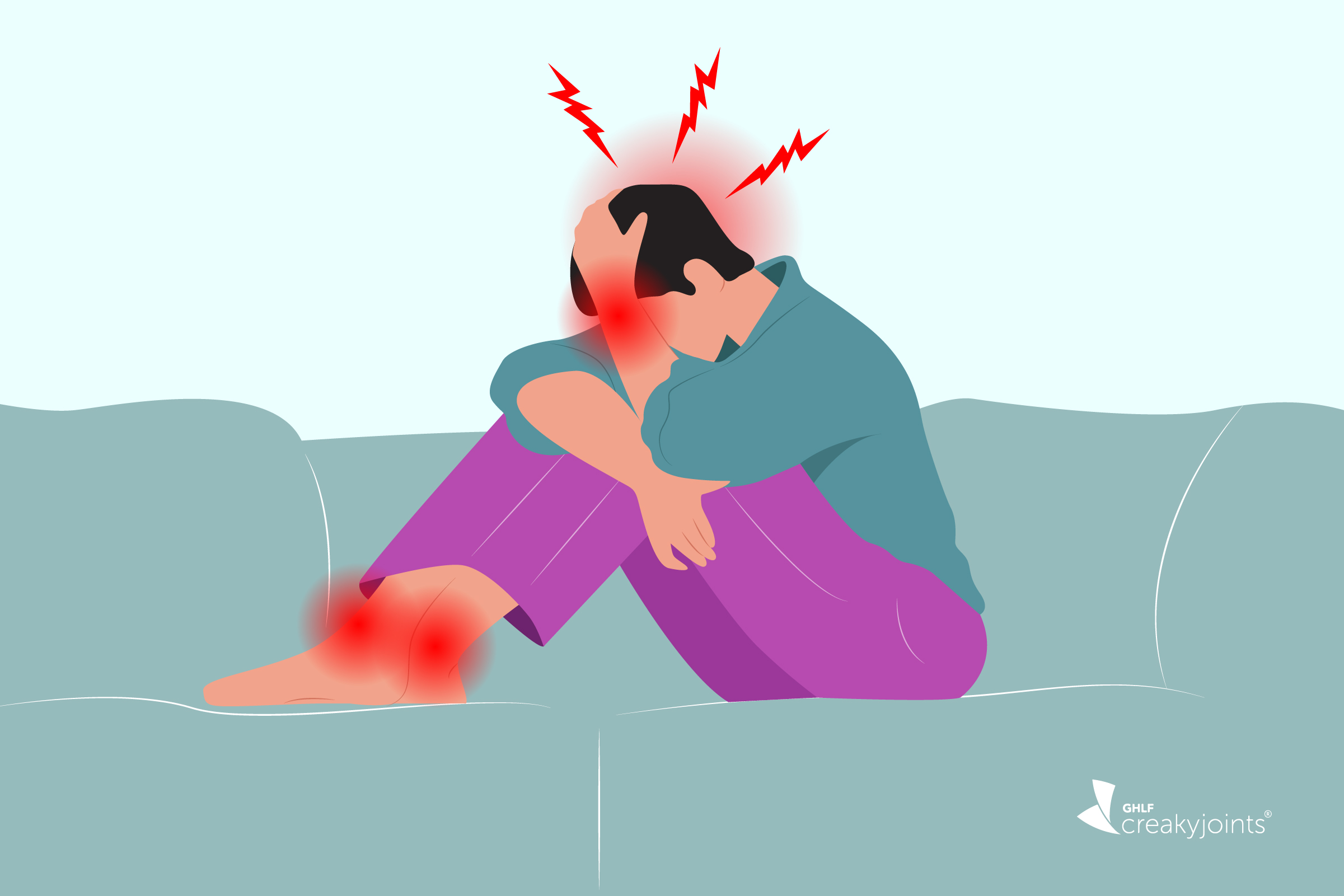Discover the symptoms of brain fog linked to migraine and learn coping strategies to manage cognitive challenges.
28 Wellness Tips for Living with Chronic Migraine
28 Wellness Tips for Living with Chronic Migraine
Self-care isn’t selfish. Incorporating it into your treatment plan can help reduce the frequency and severity of your migraine attacks.
October 31, 2022
Karyn Repinski

No one, especially not someone who endures relentless waves of migraine attacks, wants to be told they have a condition that can’t be cured. But that’s the case with chronic migraine, which is defined as having headaches at least 15 days per month.
Fortunately, chronic migraine is a much more manageable condition than ever before, says Dawn Buse, PhD, a licensed psychologist and Clinical Professor of Neurology at Albert Einstein College of Medicine in New York City. “We know more, and we have better treatments to help people have many fewer monthly migraine days.”
That includes pharmacologic treatments like the new CGRP inhibitors for migraine prevention and nonmedication options such as biofeedback, cognitive behavioral therapy, relaxation therapies, and neuromodulation.
But managing chronic migraine isn’t just about getting an injection or working with a therapist. Adding self-care strategies — a range of healthy lifestyle habits — is important to create a well-rounded treatment approach. “If you live with migraine, there are about half a dozen areas you can focus on that will stack the odds of having fewer migraine attacks in your favor,” says Dr. Buse.
In all six areas, from exercise to social engagement, the goal is healthy consistency. “People with migraine have a sensitive nervous system, so the best thing if you live with migraine is to keep a very regular, stable lifestyle,” says Dr. Buse. Even though that won’t change the fact that someone has a hyper-excitable nervous system, it may raise their threshold for migraine attacks so they won’t have to go through that debilitating experience.
Exercise
Regular physical activity helps manage the symptoms and triggers of migraine on multiple fronts.
Move more
There are almost too many benefits of regular exercise to list, including reducing heart disease risks, improving brain health, maintaining a healthy weight, and sleeping better — all of which also improve migraine. If you’re new to exercise, start where you are, says Dr. Buse. “Start low, go slow, and build up to make it a habit.” Aim for a goal of at least two and a half hours a week; there’s evidence that people with chronic migraine who use preventative treatments have fewer migraine days each month when they exercise for that long.
Consider a morning walk
Starting your day with a walk may give you more energy throughout the day — and research shows that if you walk outdoors, that’s especially true. Migraine advocate CarmenRose Fiallo, who almost always wakes up with a migraine, begins her day with a simple walk around the block. “Sometimes, it feels impossible to get out of bed and get moving, but this gentle movement almost always helps with my symptoms, and I’m so thankful I did it after.”
Unroll your yoga mat
A recent study found that yoga as an add-on therapy is superior to taking medication alone in reducing the frequency of migraine attacks. Patients who did a regular yoga routine for three months had a 50 percent reduction in migraine frequency and almost a 50 percent drop in their use of rescue medication.
Diet and Nutrition
Eating a healthy diet and identifying food triggers can help reduce the frequency of migraine attacks.
Adopt a low-inflammation diet
There’s been so much conflicting information about what people with migraine should eat and avoid eating. According to Dr. Buse, “Scientifically, it’s looking like it comes down to a low-inflammation diet, which means a balance of healthy fats, and lots of natural fruits, veggies, and unprocessed food.”
Her advice: When food shopping, think “natural and balanced. In the grocery store, stay in the perimeter where the fruits, vegetables, and unprocessed proteins are and buy more of those.” Don’t skip treats — “a little bit makes you happy,” says Dr. Buse.
Know your food triggers and avoid them
Food triggers are very personal. “Chocolate is an instant attack for me, so I have to be very strict with myself,” says Michelle Tracy, who has lived with chronic migraine for more than 15 years.
Other foods that are thought to trigger migraine in susceptible people include:
- Alcohol
- Aspartame sweetener
- Caffeine
- Cheeses
- Caffeine
- Food additives, like MSG
- Processed meat
If a food is culpable for triggering your migraine, it should do so within 12 to 24 hours, according to the American Migraine Foundation. Keeping a headache diary and following your lifestyle factors along with diet may help you identify patterns to your headache.
Eat regularly
“Skipped meals can precipitate migraines,” says Dr. Buse. Set up a regular eating schedule and stick to it. The risk of developing a migraine increases with the amount of time between meals, so consider eating small frequent meals instead of three big ones.
Stay hydrated
“Dehydration can be a trigger for migraine activity,” says Dr. Buse. To stay hydrated, aim to drink one eight-ounce cup of water eight times a day.
Control caffeine intake
For some people with migraine, caffeine can help relieve migraine pain; for others, it can trigger an attack. If you do consume caffeine, a good rule of thumb is to stop no later than six hours before bedtime; otherwise, it can interfere with your sleep. Ten hours is even better, since that’s how long caffeine stays in your system, according to the Cleveland Clinic.
How much caffeine is safe to drink? In a recent review, researchers concluded that there’s insufficient evidence to show that a single dose of caffeine is a migraine trigger. Still, they recommended not exceeding 200 milligrams daily, which is about two 8-ounce cups of coffee.
Consider supplements
The best evidence for vitamins and minerals that prevent migraine attacks in susceptible people are for magnesium and riboflavin, reports Margaret Slavin, RD, PhD, an associate professor in the department of nutrition and food studies at George Mason University, in an Association of Migraine Disorders podcast.
People who develop migraine often have lower levels of the mineral magnesium, which seems to block signals in the brain that lead to aura, than those without them. Exactly how it works isn’t known, but at a dose of up to 400 mg daily, riboflavin (aka vitamin B2) reduces migraine frequency by more than 50 percent. That’s more than 200 times the recommended daily allowance of the vitamin, so be sure to talk to your provider about adding it to your daily regimen.
Stress Management
It’s not a coincidence — migraine attacks are more likely to occur when you’re stressed.
Improve your stress response
The idea of managing all the stress in your life may make you laugh — so much of what causes stress is outside of our control. “You can’t always manage what happens to you in life, but you can manage how you respond to it,” says Dr. Buse. Find healthy ways of coping with it: Exercise, gardening, meditation, yoga, tai chi, and deep breathing are all effective stress reduction tools.
Stay on an even keel
“People have a 20 percent increased likelihood of a migraine attack in the 12 to 24 hours after their mood shifts from sad or nervous to happy or relaxed,” says Dr. Buse. “Let down” or “weekend” headaches, which often occur at the end of a tough day or week at work or school or the start of a vacation, are so-named because they start as stress levels decrease. To avoid a drop that can trigger an attack, keep stress levels steady — take a few slow, deep breaths or go for a short walk when you feel your stress levels rising.
Avoid trigger accumulation
When you’re stressed, be aware that paying extra attention to other triggers can go a long way — the more triggers that are present on a given day, the higher the risk for a migraine attack. “When I’m under the gun on deadlines, I try to get enough sleep and take a daily walk,” says health writer Carol Ford. “I’ve gotten into the cycle where stress causes migraine, which then creates more stress, and it’s pretty miserable.”
Take it one day at a time
“I really try not to focus on what happened yesterday or what needs to happen tomorrow,” says Jamie Sanders, a migraine advocate who’s lived with chronic migraine for over 30 years. “I need to reserve my energy for the 24 hours I’m currently living in.”
Having that mindset is not only helpful for how you pace yourself, it’s also a way to manage your mental health and not spiral into anxiety — “Oh, my gosh, this is going to happen, and I’m not prepared for it” — which can then trigger depression, says Sanders. “It’s important to be very mindful of where you let your mind go and just stay focused on the day that you’re in.”
Head outdoors
Spending as little as 10 minutes in a natural setting can help you feel happier and lessen the effects of both physical and mental stress, according to recent research from Cornell University. To prevent your communion with nature from bringing on a migraine — heat, bright sunlight, barometric changes, and strong odors are all triggers for migraine — be sure to plan around your triggers. Check the weather forecast, wear a hat and sunglasses, and avoid highly perfumed locations like flower gardens.
Count the little wins
“It takes a lot of energy to manage and balance your life when you have a chronic illness, so I try to make sure to let people know that it’s not necessarily always about the huge accomplishments you have throughout the day,” says Sanders. “If you’re able to do something that you weren’t able to do the day before — maybe it’s getting out of bed or managing to put on makeup — make sure that you congratulate yourself on that because it’s the little wins that really make the difference.”
Sniff away stress
Peppermint oil is proven to reduce anxiety and pain, likely because it contains menthol, which has a local anesthetic effect and also decreases levels of the stress hormone cortisol. When applied to the forehead and temples, menthol was even shown to alleviate the pain, nausea, and light sensitivity of migraine in one study.
“Peppermint oil feels like nature’s icy-hot patches,” says Fiallo, who dabs it on her neck, shoulders, and temples to relieve the muscle tension that can trigger migraine. “If I’m really nauseous, I’ll rub it on my wrists, which is an acupuncture point for nausea relief,” she says.
Sleep
People with migraine often suffer from insomnia, and a lack of sleep can, in turn, trigger a migraine.
Get adequate sleep
Lack of sleep and also too much sleep may lead to migraines. The healthiest sleep habit for most people is seven to eight hours every night; in one large study, people with migraine who slept only six hours a night on average had more frequent and more severe migraine attacks than those who slept longer.
Create a consistent sleep schedule
Develop a consistent sleep routine where you follow the same bedtime and wake-up time, even on the weekend. “My mind always races at night and I find it hard to turn off my brain and rest,” says Fiallo. “It took a few weeks for me to get in a rhythm with my sleep routine, but once I started getting a full night’s rest, I noticed a difference in the intensity of my morning attacks.”
Try a weighted blanket
Weighted blankets are one of the biggest things in bedding, and for people with insomnia and anxiety, two conditions that commonly occur with migraine, they may be beneficial.
A 2020 study showed that weighted blankets, which trigger the same firm, gentle pressure that can come from massage or other physical contact, can decrease insomnia severity. More recently, research found that this pressure boosted production of the sleep-inducing hormone melatonin.
Be mindful
“Mindfulness can sound intimidating, but it can be very helpful in improving sleep,” says Tracy. This is especially true if your sleep struggles are caused by anxiety. A practice that focuses on breathing and awareness of the present moment, or mindfulness training, helps calm the nervous system in preparation for sleep.
Check out guided meditations and body scans, where attention is drawn to each part of your body, on apps like Calm and Headspace. (Dr. Buse also offers free audio relaxation options on her website.) They can be effective ways of releasing tension you aren’t even aware of, so you can wind down and get to sleep.
Block the light
Sleeping in a dark room can greatly improve your quality of sleep, so consider blackout curtains or a sleep mask to block out ambient light. Being exposed to even a small amount of light during sleep was recently linked to an increased risk of depression, which already affects 80 percent of people with chronic migraine at one time or another.
Beware blue light
The blue light from tablets, smartphones, and televisions in the hours before bedtime can upset your body’s natural sleep-wake clock — blue-tinted light disrupts production of the hormone melatonin, which helps promote sleep. To keep from tossing and turning, shut off electronic devices one hour before bed. If that’s not realistic, consider a pair of special glasses that block blue light, which is also the light that’s most likely to trigger migraines.
Bathe before bed
“I wake up with migraine symptoms a lot, so I like to take a bath at night,” says Ford. “As a bonus, the warm water sets me up for a good night’s sleep. Not only does it relax me head to toe, but recent research shows that taking a warm shower or bath helps you fall asleep more quickly and stay in a deep sleep throughout the night.” Why? The warm water first increases your body temperature, after which you’ll experience an even more pronounced decrease in body temp, which is what promotes sleep.
Social Support and Relationships
Having a good support system and a sense of purpose go a long way toward having a good quality of life.
Stay connected
Living with chronic migraine can isolate you from your loved ones — retreating to your dark bedroom is often your only recourse when symptoms strike. Still, it’s important to maintain human connections, so much so that the medical community refers to the healthful power of social interaction as “the connection prescription.”
Dr. Buse encourages patients to stay connected by making plans with your partner and other loved ones, even if you can’t always keep them. “You may have to cancel some of the time, you may have to leave early, or you may need to excuse yourself and go into a dark, quiet room, but don’t stop making plans,” she says.
Do what makes your heart happy
Living with chronic migraine can suck, so — on days you’re up to it — try to “fill the fun bank,” with some amazing, indelible memories, as Paula Dumas, the founder of Migraine Again, advises.
Incorporate activities and experiences that you find enjoyable and relaxing into your schedule. Start a hobby, spend time with your pet, or take a walk around the neighborhood.
Seek encouragement
Adopting new habits to help manage chronic migraine isn’t always easy, so it’s important to surround yourself with people who uplift and support you — be they virtual, in a podcast or a support group, or your real friends and family. “You need a group of cheerleaders around you who are going to say, ‘Go, and you’ve got this,’” says Dr. Buse.
Join a support group
“My world got very small when I developed chronic migraine,” says Tracy. “Being able to find other people who understood what I’ve been through was unbelievably healing.” She now advocates for people with migraine and headache disorders and is the writer behind The Migraine Warrior blog.
Consider a canine companion
Migraine assistant dogs are often referred to as an early warning system for migraine: They’re trained to detect early signs of an oncoming migraine attack by paying attention to and picking up any changes in their owner, particularly through their keen sense of smell. But they also assist with the emotional factors of the disease — the isolation and depression. Having a service dog helps you get out and moving and, depending on how they’re trained, they can provide gentle pressure to the body that relaxes the nervous system and reduces anxiety, making it easier to be out and about.
Thanks to her service dog — golden retriever, Clea — migraine patient advocate Candace Camper lives a fuller, more independent life. “Before chronic migraine, I was a social butterfly who could always be counted on at a gathering, at the mall, or out to eat with friends,” says Camper. Now, she’s more selective about her activities, but having Clea always at her side allows her to venture out in the world with confidence.
Hear From More Experts and Patients Living with Migraine
Talking Head Pain is a podcast that confronts head pain, head on. Brought to you by the Global Healthy Living Foundation and hosted by migraine advocate Joe Coe, this show explores how people living with migraine, cluster headache, and other types of intense pain find ways to better manage their disease. Listen here.
Sources:
American Migraine Foundation. Diet and Headache Control. https://americanmigrainefoundation.org/resource-library/diet/
Association of Migraine Disorders. S3:Ep30 – Vitamins and Supplements for Migraine Management. October 2021. https://www.migrainedisorders.org/podcast/s3ep30-vitamins-and-supplements-for-migraine-management/.
Akbari F, et al. Effect Of Peppermint Essence On The Pain And Anxiety Caused By Intravenous Catheterization In Cardiac Patients: A Randomized Controlled Trial. Journal of Pain Research. Oct 21 2019. doi: 10.2147/JPR.S226312. https://www.ncbi.nlm.nih.gov/pmc/articles/PMC6814313/.
Borhani H, et al. “Cutaneous Application of Menthol 10% Solution as an Abortive Treatment of Migraine without Aura: A Randomised, Double-Blind, Placebo-Controlled, Crossed-over Study: Menthol Solution for the Treatment of Migraine.” International Journal of Clinical Practice. March 2010. doi: https://doi.org/10.1111/j.1742-1241.2009.02215.x.
Caffeine: How to Hack It and How to Quit It. Cleveland Clinic. https://my.clevelandclinic.org/health/articles/15496-caffeine-how-to-hack-it-and-how-to-quit.
Dumas, P. 6 Rules of Love, Sex and Dating with Migraine. February 2020. https://www.migraineagain.com/6-basic-rules-dating-chronic-migraines/.
Ekholm, B. “A Randomized Controlled Study of Weighted Chain Blankets for Insomnia in Psychiatric Disorders.” Journal of Clinical Sleep Medicine. September 15, 2020. doi: https://doi.org/10.5664/jcsm.8636.
Faisal M, et al. “The Association between Migraine and Physical Exercise.” The Journal of Headache and Pain. December 2018. doi: https://doi.org/10.1186/s10194-018-0902-y.
Haghayegh, S et al. “Before-Bedtime Passive Body Heating by Warm Shower or Bath to Improve Sleep: A Systematic Review and Meta-Analysis.” Sleep Medicine Reviews. August 2019. doi: https://doi.org/10.1016/j.smrv.2019.04.008.
Kelman, L, et al. “Headache and Sleep: Examination of Sleep Patterns and Complaints in a Large Clinical Sample of Migraineurs.” Headache: The Journal of Head and Face Pain. July 2005. doi: https://doi.org/10.1111/j.1526-4610.2005.05159.x.
Kumar, A, et al. “Effect of Yoga as Add-on Therapy in Migraine (CONTAIN): A Randomized Clinical Trial.” Neurology. May 26, 2020. doi: https://doi.org/10.1212/WNL.0000000000009473.
Meth, E, et al. “A Weighted Blanket Increases Pre‐sleep Salivary Concentrations of Melatonin in Young, Healthy Adults.” Journal of Sleep Research. October 3, 2022. doi: https://doi.org/10.1111/jsr.13743.
Obayashi, K, et al. “Bedroom Light Exposure at Night and the Incidence of Depressive Symptoms: A Longitudinal Study of the HEIJO-KYO Cohort.” American Journal of Epidemiology. March 1, 2018. doi: https://doi.org/10.1093/aje/kwx290.
Ryan, R, et al. Vitalizing effects of being outdoors and in nature. 2009. Journal of Environmental Psychology. http://selfdeterminationtheory.org/SDT/documents/2010_RyanWeinstenEtAl_JEVP.pdf.
SUBSCRIBE TO GHLF
RELATED POST AND PAGES
_
Was this article helpful?
YesNo




